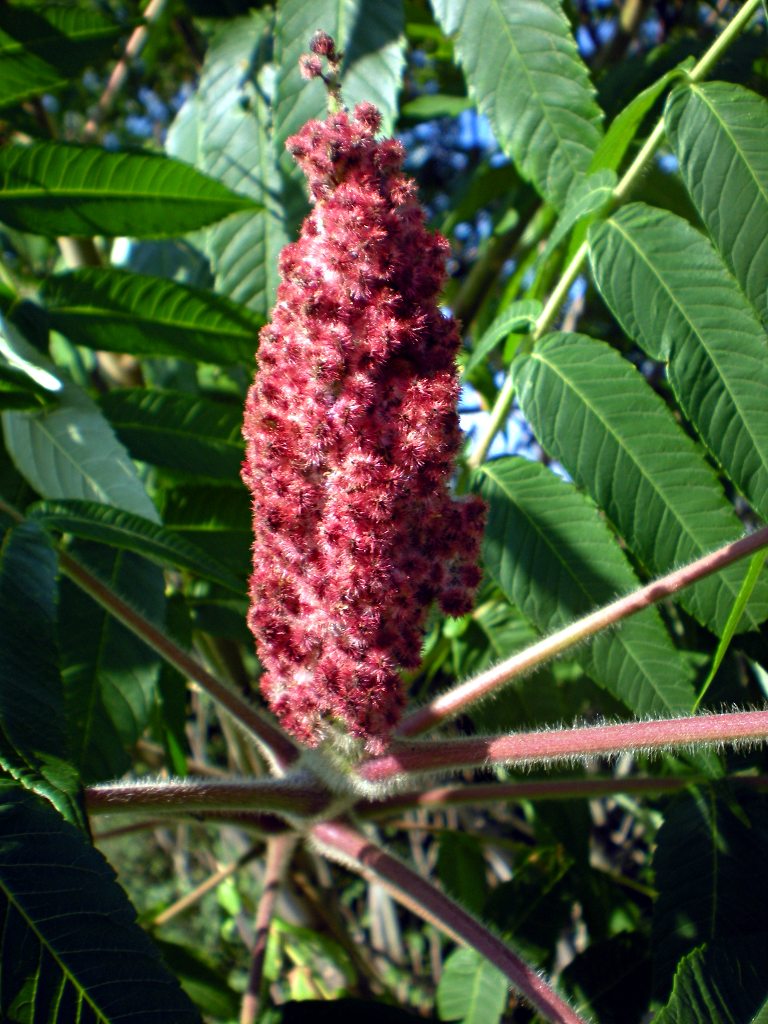
An aggressively weedy but beautiful tree (and nowhere near as weedy as the “Chinese Sumac” or Tree of Heaven); its large leaves have a tropical look, and in the fall they display the most riotously vivid reds and oranges. The little greenish flowers don’t attract much attention, but the beautiful fruit clusters can range from deep mahogany to vivid rose.
Sumacs belong to the same family that gives us Poison Ivy, but also the tropical cashews and mangoes. For the sake of a mango we can forgive the family anything.
This tree was growing at the edge of a field in Seven Fields, where it was showing off its staghorns in late July.
Gray describes the genus and the species, which he places in the Sumac section of the genus Rhus:
RHÚS L. SUMACH. Calyx small, 5-parted. Petals 5. Stamens 6, inserted under the edge or between the lobes of a flattened disk in the bottom of the calyx. Fruit small and indéhiscent, a sort of dry drupe. — Leaves usually compound. Flowers greenish-white or yellowish. (The old Greek and Latin name.)
§ 1. SUMAC DC. (in part). Flowers polygamous, in a terminal thyreoid panicle; fruit globular, symmetrical, clothed with acid crimson hairs; ttou smooth; leaves odd-pinnate. (Not poisonous.)
R. typhina L. (STAGHORN S.) Shrub or tree, 1-10 m. high, with orange-colored wood; branches and stalks densely velvety-hairy; leaflets 11-31, pale beneath, oblong-lanceolate, pointed, serrate. (Ii. hirta Sud worth.) — Dry or gravelly soil, e. Que. to Ont., s. to Ga., Ind., and Ia. June, July. — Apparently hybridizes with the next species. Forma Laciniata (Wood) Kehder. Leaflets and bracts more or less deeply and laciniately toothed. — A frequent form, at least in some cases pathological and with inflorescence transformed in part into contorted bracts (the Dalisca hirta of L.). Forma Dissecta Rehder. Leaves bipinnatifld to bipinnate. — An occasional form, now in cultivation.